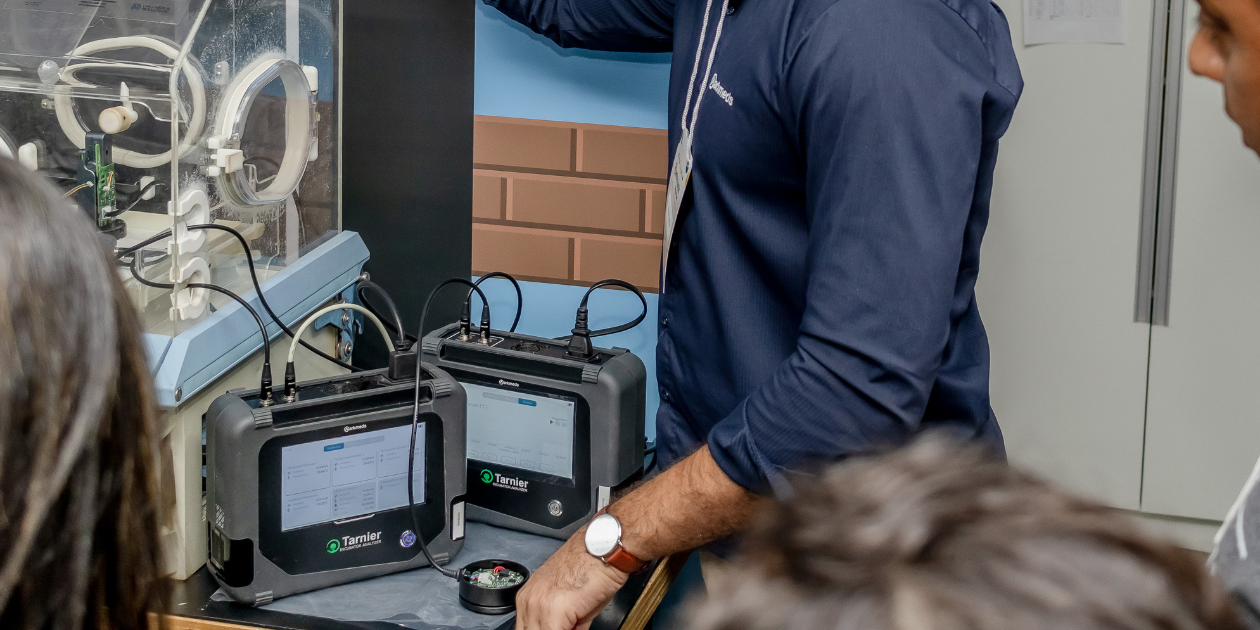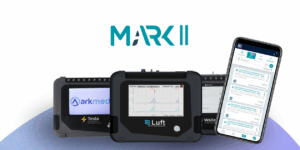The neonatal area demands absolute precision. When it comes to incubators and heated cribs, any variation in temperature, humidity, flow or noise can directly jeopardize the life of a premature baby. And it is in this scenario that calibration becomes much more than a technical requirement: it becomes a pillar of care safety.
In this article, we’ll explore the full content of our eBook on neonatal calibration, covering concepts, standards, methodologies and best practices, including automation with the Tarnier analyzer, connected to the Arkmeds platform. All with the aim of reducing errors, ensuring traceability and raising standards in healthcare institutions.
📥 Download the complete eBook and immerse yourself in this technical universe with depth and applicability:
👉Go here
What is the Calibration of Incubators and Heated Cradles?
Calibration consists of accurately checking parameters such as temperature, humidity, air flow, noise and oxygen inside neonatal incubators and heated cribs. These devices are essential for maintaining the physiological stability of newborn babies, especially premature and low birth weight babies, whose survival depends on a strictly controlled environment.
Common errors due to lack of calibration:
- Hypothermia or hyperthermia in the baby;
- Low oxygen levels, impairing lung development;
- Stress caused by noise above tolerable levels;
- Irregular distribution of temperature and humidity.
Applicable Technical and Regulatory Standards
All calibration must follow national and international standards, the main ones being:
- ABNT NBR 60601-2-19: defines safe limits for temperature, noise and other parameters.
- ISO/IEC 17025: validates the competence of laboratories performing calibrations.
- ANVISA RDCs, such as RDC 36/2013, which regulates safety in care environments.
Important: Failure to comply with these standards can lead to sanctions, failed audits and serious clinical risks.
Manual Calibration vs. Calibration with Tarnier
Manual calibration:
- Use of manual sensors (thermometer, anemometer, hygrometer, etc.);
- Making notes on spreadsheets or papers;
- High chance of human error;
- Need to compare readings manually.
Calibration with Tarnier:
- Exclusive Arkmeds equipment that simultaneously measures all parameters;
- It has a baby skin simulator;
- Automatic generation of digital reports;
- Complete integration with the Arkmeds platform, with QR code, traceability and digital signature.
🎯 Proven earnings:
Automation with Tarnier reduces calibration execution time by up to 50% and minimizes filling errors.
Necessary tools
For manual calibration:
- Calibrated thermometers;
- Hygrometers;
- O₂ probes;
- Skin simulator;
- Physical spreadsheets or Excel.
For calibration with the Tarnier:
- Tarnier (with integrated sensors);
- Arkmeds platform with user access;
- Notebook or tablet for connection and operation.
How to Calibrate Manually – Steps
- Preparing the environment
- Sensor positioning
- Data collection and recording
- Interpretation and manual adjustments
- Generation of physical or digitalized report
This process requires expertise and extra attention, as each decimal error can generate distortions that directly affect neonatal care.
How Calibration Works with Tarnier – Steps
- Connection to the equipment;
- Position the sensors according to the guidelines;
- Start of real-time measurement;
- Automatic report generation;
- Upload to the Arkmeds platform with full traceability.
📌 Want to understand how Tarnier integrates with your CMMS?
Read more
Benefits of Tarnier with the Arkmeds Platform
Eliminates paper and reduces the risk of manual errors;
✅ Ensures standardization in all services;
✅ Reports with automatic graphs and tables;
✅ Full integration with OSs and certificates;
✅ Facilitates compliance with standards and audits.
Avoiding Common Mistakes
The main errors in manual calibration include:
- Measurements outside the baby’s critical point;
- Lack of verification of thermal stability;
- Noise above the recommended level;
- Incorrect completion of reports.
With Tarnier, these errors are drastically reduced thanks to the automated collection and AI validation system.
Impact on Quality and Cost Reduction
📉 35% reduction in corrective maintenance costs in institutions that adopt automation;
📊 30% reduction in the incidence of clinical failures related to temperature and humidity in neonates;
📈 Optimization of the technical team’s time, freeing up professionals for more strategic functions.
How to integrate the Arkmeds solution into your institution
Integration begins with an analysis of the current flow and, from there, the Arkmeds team configures the parameters and creates automated checklists based on current regulations. The whole process is guided by technical and educational support.
🧠 Also access the technical content:
👉 https://blog.arkmeds.com/calibracao-de-incubadoras-neonatais/
Conclusion: A New Era in Clinical Engineering
The clinical engineering of the future is automated, integrated and traceable. Tarnier is not just an analyzer – it is a bridge between technical precision and care safety. When integrated into the Arkmeds ecosystem, it guarantees it:
- Higher quality standards;
- Continuous compliance with standards;
- Readiness for audits and accreditations;
Operational efficiency and cost reduction.



